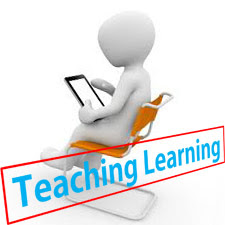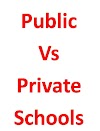Background
Learning theories are the philosophies of gaining knowledge and information. It is unanswered how to find out the best way of teaching and learning. People can learn from various ways in different stage in different situation. Life is journey of learning which itself shows the road how to walk properly. However, so many psychologists developed effective way of teaching and learning which directly and indirectly acceptable in classroom practices. School education system is highly affected by reward, punishment and motivation. These three are the controlling factors of school education too. Learning theories are the ways that student can gain the knowledge and how to retain information.
Trial and Error
One of the groundbreaking
psychologist Thorndike introduced 'Trial and Error' theory which is highly
governed by reward and punishment system. It is very effective way for
classroom practices yesterday, today and tomorrow. According to the theorist Thorndike's
learning is only possible through trial and error. Successful variant affects
very much in learning process. A learner can learn only through countless
practices in his or her life. While the child enter to school, in the process
of learning first alphabet they try to speak, try to write time and again after
that she or he recognize the latter. So, trial and error theory also used in
Mathematics and Science equally. One saying is here, practice makes a man perfect.
It means nobody in the world is perfect. People learn everything through
practices. People make so many mistakes while learning. They decrease the
history then grapes the goal of learning. Therefore learning is process not
product.
Reward for learning
In what senses reward would affect
student's motivation is great concerning subject for school supervisor and
teachers these days. Another big issue is what kind of activities can they
implement to reward in class? To address these serious questions, a wise
teacher always tries to make students happy not fearful. It is the good
background for learning new lesion. The positive atmosphere motivate them
successfully understanding.
Announcing with thanking words like
handshake, smiling, telling good, very good, you are doing nice, it is better
than yesterday, well-done, keep it up, you are absolutely nice, go ahead etc
are all rewards in classroom teaching process. On the other hand giving prize,
scholarship, money, gifts are another process of reward.
According to Throndike rewards are
the stimulus for response. A teacher should not be greedy to response such
thankful words. These words increase student to go ahead. If teacher want to
improve his teaching profession she should love students from inner heart. And
give rewards in each and every small success.
Punishment
Teacher can decrease unwanted
activities of students through punishment. Even though, new technology of
teaching style suggests punishments are harmful in classroom teaching. Psychologist
mainly Throndike highlighted that punishments are necessary in teaching
learning process. It is controlling factor of classroom. Teacher can make
students well-disciplined through punishment. To make students more obedient
and polite, punishment is very important in teaching learning process. It is
the best way of behavior shaping.
Some positive effects of Punishment Classroom practices
·
To avoid unnecessary behavior of
students.
·
To make classroom environment readable.
·
To keep control in classroom.
·
It helps to develop classroom as
classroom.
·
It leads students for being self-motivated.
·
It makes the school staff more punctual
for their works.
·
It is the way to do work in effectively.
Some Negative Effects of Punishment in Classroom Practices
·
It may be cause of halo effects.
·
Some students may take negatively and
react the teacher badly.
·
Some time beating, scolding may harm
student badly.
·
Some students could not understand and
overlook teacher as enemy.
·
Some student may suicide because of
teacher's uneasy voices.
·
It makes the classroom environment
fearful.
Motivation
Motivation is the force
and drive which appears and comes from the inner core of a person to achieve or
possess the thing, situation or atmosphere. Motivation in classroom practices
means teacher should encourage student from educational setting. There are two
main sources of motivation first is intrinsic motivation. Humanistic theorist
Carl Rogers highlighted the factor of intrinsic motivation which is on personal
interest. It is related to that condition or situation in which the person is
guided by the heart who is ready to study in the classroom is internal
motivation. The person who is internally motivated can always become active
himself for the work. Whatever the task is available the student becomes ready enthusiastically.
External motivation means someone another person, other physical items or environment attracts the person for studying. It is called less effective than first one. Externally motivated person is highly affected by reward and punishment. It is not as much creative as internal motivation. To develop the motivation externally, teacher should use a lot of teaching materials. Video, projector, listening practices, chart paper, pictures as well as practice book are recommended to use.
Counseling and Guidance
Counseling is specific
idea and principle to motivate students. Teacher as a counselor can
unconditionally support students. It is popularly said for teacher that she
should give her time for student who is not motivated for the study. The
teacher should ask for or consult the actual family situation, personal problem
before she suggests the student for the study. It is like personal taking care
of students in which teacher should behave as friendly as she can.
Guidance helps students avoiding wrong behavior. It is the responsibility of every teacher in the school. A teacher or principal can guide so many students at once. Students are guided by teachers may be in large group or small group. Counseling and guidance are external form of motivation.
Ways of Fostering Intricacy motivation in Classroom
Autonomy and freedom
In the classroom
teaching, teacher should leave the students freely not more controlling
environment. They can perceive the lesion as they make readiness to receive
themselves.
Real Information
Teacher should tell the
students progressive report time and again so that they acknowledged the real
situation themselves. It is the pull and push factor of motivation.
Goal and Objectives
Teacher should
previously tell the students about the goal and objectives of teaching very lesson.
Goal and objective must to clear at first so that students will became
readiness in classroom study.
Intrinsically motivated
students know the merit of own and they know the value of time so that they are
easy learners in the classroom. On the other hand, students guided by external
motivation expect rewards.
Utilization
of Lesion Plan
Every teacher should
have pervious plan before entering the classroom. What to teach, how to teach,
where to teach, when to teach all the answer should be there in lesson plan.
The detail plan gives the teacher the way of teaching. Therefore for estimating
teaching materials and teaching activities, lesson plan will be helpful for
every teacher. However, teacher may have long experience she can use it to
create teaching environment more interesting. New teaching materials i.e.
pictures, charts, vocabulary chart, some short story, drama make students more
curious in their study.
Conclusion
School education is one
of the compulsory educations all over the world. Every child in the world go to
school to build their bright future. School education is highly affected by
reward, punishment and motivation. Pointed three factors are equally important
to improve classroom atmosphere. The teacher is became the best teacher who can
acknowledge the students from internally and externally. The teacher is
facilitator to can support students in the classroom effectively. Preparing for
respectful environment, equal opportunity, managing rewards and punishment are
motivating factor of school education. Teaching is not easy job. It is
complicated itself. Teacher should be accountable with both parents and school
administration. If someone wants to become successful teacher he or she should
have different qualities than other normal job holder.
 |
| Ms. Kafle, (Master of Education, TU & Master of English, MU) |
Related Sources and Articles
How to Teach Writing Skill?
Scenario of English Language in Nepal: Need & Use
Acquisition, Learning and Attitude in Second Language
Plagiarism Issue in the Third World Countries
References
Timilsena (2023) Teaching Platform for the University Students
Learning Theories and Classroom Practices
An Analysis of the Role of Rewards and Punishment










0 Comments